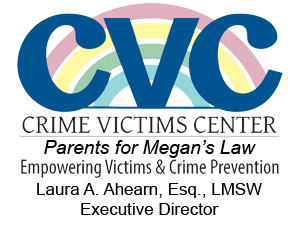CVC Domestic Violence Prevention and Outreach Program
Legislator Kara Hahn and CVC Executive Director Laura Ahearn worked together to craft legislation that would provide the Jacquelyn Campbell Domestic Violence Danger Assessment live webinar training to domestic violence service providers, law enforcement, and other stakeholders. The danger assessment is an instrument that helps determine the level of danger an abused woman has of being killed by her intimate partner. The training provides instructions on how to score and interpret the tool, gives background information about the development of the tool and its importance to anyone interacting with abused women and, gives recommendations for follow-up for the different score levels. It also explains the weighted scoring of the tool, which is vital to accurately determining the level of danger for the woman. A certification is provided after successful completion of a port-test.
When an intimate or non-intimate partner domestic violence victim initially makes contact with a CVC advocate, the advocate and other domestic violence victim services provider advocates conduct danger assessment screenings. The victim works with the advocate to answer questions which will reveal a score that helps her to understand the grave danger she may actually be in. In addition, the victim is provided a blank calendar to fill in incidences of abuse so that she can begin to see a pattern and understand the reality of her circumstances. This helps motivate domestic violence victims to take steps to remove themselves from dangerous relationships.
Legislator Kara Hahn and CVC Executive Director Laura Ahearn worked together to craft legislation that requires the Suffolk County Probation Department to conduct a GPS monitoring program employing thirty GPS units exclusively for domestic violence offenders. The Resolution authorized the Probation Department to provide the Suffolk County Family Court with the ability to monitor electronically respondents in the Family Court who are subject to a ‘stay away’ Order of Protection and who pose a potential threat to the physical safety of the victim/petitioner, or to the children of the victim/petitioner. Probation was also authorized to recommend GPS monitoring to presiding judges as a condition of Supervised Release, or as a Condition of Probation or of Interim Probation, or for any person convicted or charged with a family offense and subject to a ‘stay away’ Order of Protection.
Working with police to improve upon existing procedures, the legislation also required law enforcement to establish new procedures to implement the Portland Police Bureau’s Risk Assessment for Intimate Partner Violence Model to evaluate level of risk, and investigate cases of domestic violence that are deemed to be a the highest level of risk. In addition, the legislation also required law enforcement to distribute materials to domestic violence victims to ensure that if they never made contact with a victim service provider they would be afforded an opportunity to utilize the danger assessment instrument. The Suffolk County Police Department are required to distribute: the Jacquelyn Campbell Danger Assessment Instrument, accompanying calendar, the 20-item scoring instrument and a cover sheet providing an explanation of the tool and referrals for domestic violence victim service providers.
Lastly, with unwavering support of Suffolk County Executive Steven Bellone, the Legal Systems Subcommittee of the Family Violence Task Force chaired by Executive Directors Laura Ahearn and Dolores Kordon from Brighter Tomorrows was and continues to be given opportunity and tools to develop and implement programs to reduce the incidence of domestic violence. Guides to prevent detect, and respond to domestic and dating violence were created for professionals working with vulnerable populations. The Medical Practitioner’s Guide to Assisting Victims of Domestic Violence provides doctors and other medical practitioners with tools to screen patients that may present with symptoms of domestic violence, sexual assault or other types of domestic abuse. This Guide is being distributed semi-annually to over 300 Suffolk County Family practitioners, hospitals, social workers and hospital emergency rooms.
The Guide to Assisting Victims of Dating Violence in Suffolk County is distributed to every school district in Suffolk County semi-annually and is designed to educate professionals working with children how to detect report and respond to teen dating violence. The Guide also includes crucial information about Teen Sexting Prevention in New York and its consequences. This Guide is being distributed semi-annually to over 150 Suffolk County Middle and High Schools.
Domestic Violence related arrests- criminal offenses from verbal harassment to homicide – dropped 21% in Suffolk County in 2017. A well developed and implemented strategic plan beginning in 2014 has seen remarkable results in just three years.
1 Newsday March 22, 2019. Number of Domestic Violence Reports in Suffolk and Nassau, Statistics Show.
© 2019 CVC All Rights Reserved. Not to be reproduced or distributed without express written permission from the CVC.
